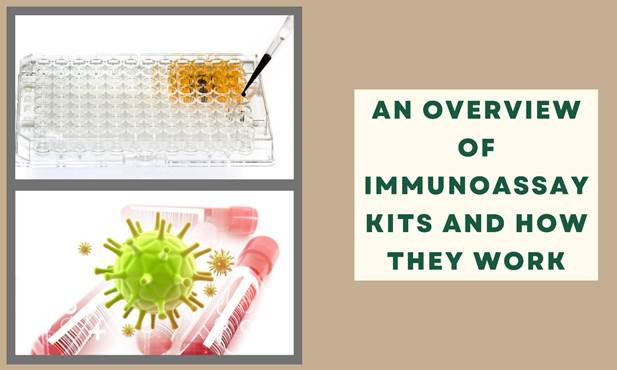An Overview of Immunoassay Kits and How They Work
Feb 22nd 2023
Immunoassays have been utilized in the healthcare industry, laboratory medicine, and scientific studies for over 40 years to enrich the lives of humans and animals. Clinical immunoassay testing has enhanced therapeutic options, reducing the length of time patients spend in the hospital and the severity of their illnesses.
In the field of life sciences, immunoassays play a vital role in investigating biological systems by monitoring various proteins, hormones, and antibodies. In the commercial sector, immunoassays are used for multiple purposes, including the detection of toxins in food and water and the quality control monitoring of specific molecules utilized in the manufacturing process.
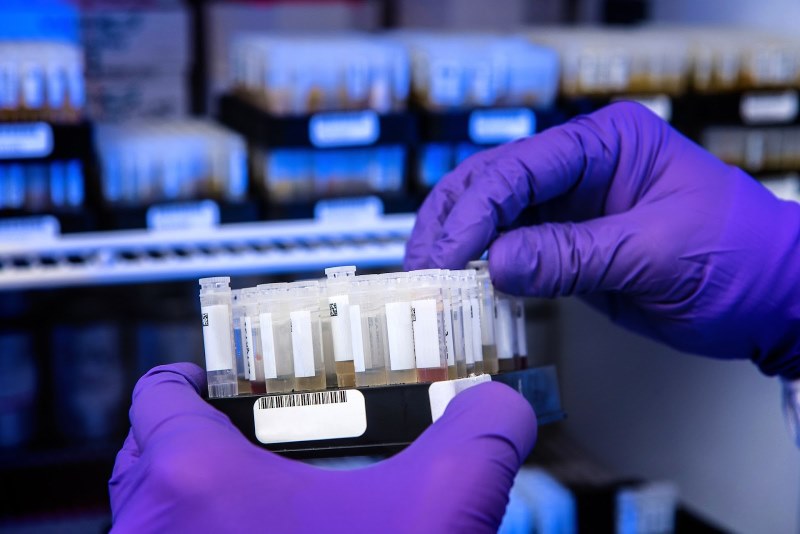
In the commercial sector, immunoassay tests are used for various purposes, including the detection of toxins in food and water and the quality control monitoring of specific molecules utilized in the manufacturing process.
This guide will review various aspects of immunoassay kits, how they work, and their uses.
What is Immunoassay?
For those wondering what is an immunoassay, it is a molecular detection test that may be utilized both in the field and in the lab because of how fast and reliable they perform. Immunoassays depend on an antibody's natural ability to bind to the distinct structure of a molecule to be accurate. Hence, they’re valuable for custom antibody production services. Animals produce antibodies and proteins whenever their bodies detect the presence of a pathogen. Antibodies may be found in bodily fluids, including blood and tissue fluids, and they can bind to antigens anytime they come into contact with them.
Antibodies are particular because they exclusively bind to their target antigen or analyte, and this is achieved by tailoring the custom antibody to the antigen's three-dimensional framework. Once isolated from human blood, pure monoclonal and polyclonal antibodies serve as highly precise test reagents for monitoring target molecules with minimal interference from surrounding compounds and chemicals.
How Immunoassay Testing Works
Antibodies can be used in immunoassay testing to identify low concentrations of biomarkers in blood and other body fluids. This approach lets antigens bind to freshly introduced specific antibodies, generating an immunological response. This refers to selectivity; antibodies have a narrow target range and bind only to their intended analyte. An immunoassay can detect analytes with clean reagents by utilizing the interaction between an antigen and an antibody. When the target analyte is present, a color change occurs. The color seen represents the concentration of the targeted chemical in the test fluid.
Types of Immunoassays
Some types of Immunoassay tests available include:
1. RIA
The term "radioimmunoassay" refers to a procedure that uses a radioisotope to find the desired antigen.
When testing blood for the Hepatitis B antigen, RIA is the method that is utilized. RIA, however, suffers from the drawback of being a significantly time-consuming process with several potential risks.
2. EIA
Enzyme immunoassay, or EIA, is a technique that uses an antibody to identify a target antigen marked with an enzyme, making it possible to detect very minute amounts of the target antigen.
3. ELISA
The ELISA test is the most popular immunoassay in use today. Enzyme-Linked Immunosorbent Assays (ELISA) measure quantities of the target antigen. It is commonly used to detect the presence of viruses such as HIV in blood samples.
There are four common types of ELISA immunoassay: rapid assays, antigen-down immunoassays, competitive inhibition assays, and monoclonal-polyclonal sandwich tests.
4. Antigen-Down Immunoassay
Instead of using an antibody, an antigen is utilized in an antigen-down immunoassay. The analyte is deposited onto a 96-well microtiter plate, and then it is applied to bind antibodies that are present in a specimen. Antibodies (like IgE) in the sample are kept in the well after being bonded to the antigen on the plate. This is done when a specimen (like a human serum) is introduced to the plate.
Then, a species-specific antibody (such as anti-human IgE) tagged with HRP is added, which attaches to the antibody on the dish that is attached to the antigen. The greater the signal, the greater the number of antibodies in the sample. Typically, a patient's blood is analyzed against several allergens to determine if the individual has antibodies to that allergen. This is possible with an antigen-down assay, which can be set up as a quick test.
5. Sandwich Monoclonal-polyclonal Assays
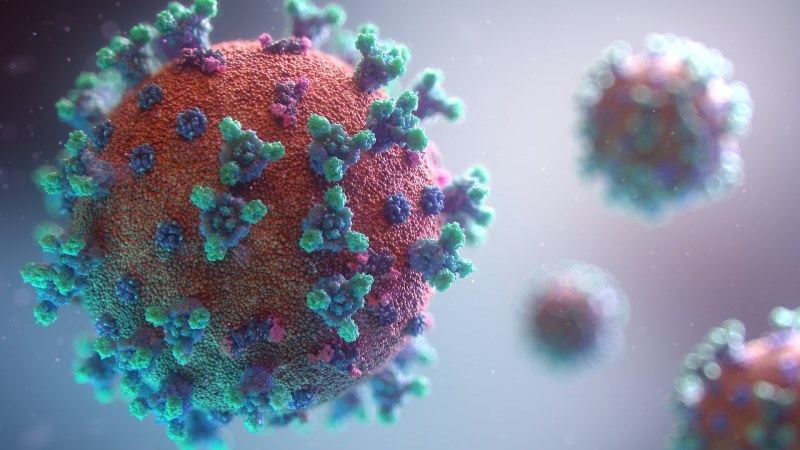
A standard microtiter plate sandwich immunoassay involves the adsorption of a monoclonal antibody around a plastic microtiter dish. The antibody that is already present on the plate will attach the designated antigen that is present in the test specimen and keep it contained within the scale once the sample has been added.
The subsequent addition of a polyclonal antibody causes it to attach to the target antigen, previously associated with the monoclonal antibody on the plate. This creates an antigen "sandwich" split between the two distinct antibodies. This binding reaction can then be assessed using radioisotopes, in a format known as radio-immunoassay (RIA), or using enzymes, in a form known as enzyme immunoassay (EIA or ELISA). Both of these formats make use of a polyclonal antibody.
There is a direct correlation between the quantity of target antigen in the specimen and the intensity of the color signal produced by the radioisotope or catalyst. The intensity of the color is noticeable and measurable, seen by the eye, a scintillation counter (during RIA), or a spectrophotometric plate reader (for an EIA)
6. Competitive Assays
Compared to traditional ELISA kits, which need the binding of two antibodies, competitive inhibition assays only need the attachment of a single antibody, making them ideal for measuring low concentrations of analytes. Due to the likelihood of steric hindrance developing whenever two antibodies simultaneously try to fasten to a tiny molecule, a sandwich test format could not be practical.
To this end, a competitive inhibition experiment is recommended. A sequential competitive inhibition test is similar to a sandwich assay in that the specimen and coated analyte are applied simultaneously throughout the incubation process. In contrast, a traditional competitive inhibition assay has these reagents cultured jointly and simultaneously. Monoclonal antibodies are layered on 96-well microtiter plates for subsequent competitive inhibition assays. MoAbs are designed to specifically bind free analytes in a sample after exposure to the MoAb.
The following step involves adding a biotin- or HRP-labeled quantity of the analyte of interest. If the analyte from the model has already been attached to the MoAb immobilized onto the plate, the linkage of the tagged analyte is blocked. This indicates that the monoclonal on the plate will not bind the labeled analyte if it has already bound the undeclared analyte from the specimen. This occurs when the monoclonal has been used previously. The strength of the labeled analyte's signal is inversely related to the concentration of the unmarked analyte in the specimen.
7. Rapid Immunoassay
Immunoassays can be set up as slow laboratory tests (using microtiter plates) and quick diagnostics (like a home pregnancy test). Like microtiter plate assays, rapid tests rely on antibodies to respond to antigens. These tests can be produced in various models, including MoAb-PoAb sandwich, competitive inhibition, and antigen-down formats.
The rapid test uses antibody and antigen chemicals immobilized on porous, cellular membranes, which respond to positive specimens while directing any surplus liquids to the membrane's non-reactive side. In most cases, rapid immunoassays are available in two distinct formats: a lateral flow test, where the specimen is merely put in a well, and the outcomes are recorded immediately, and a flow-through system, where the specimen must first be placed in a well, and afterward the well must be washed, and at last, an analyte-colloidal gold conjugate must be added, and the findings must be read following a few minutes.
Each test strip or cassette only has room for a single specimen. Non-laboratory professionals frequently employ rapid tests to analyze whole samples since they are quicker than microtiter plate assays, require minimal sample preparation, are typically less expensive, and produce yes/no results without equipment. On the other hand, fast immunoassays are less specific and cannot be used for precise quantitation of an analyte.
What applications do immunoassays serve?
Immunoassays are commonly utilized since they are simple to conduct. Below are a few popular applications of immunoassays.
1. Clinical Diagnosis and Medication Supervision
Immunoassays play an essential role in the diagnosis and cure of several diseases. Immunoassays are utilized in cancer diagnosis, pregnancy testing, and therapeutic medication monitoring, among other applications like custom peptide synthesis. These bioanalytical assays can assess the efficacy of prescription drugs used to treat cancer and HIV. In addition, they serve in the field of drug testing in places of work.
2. Analysis of Biopharmaceuticals
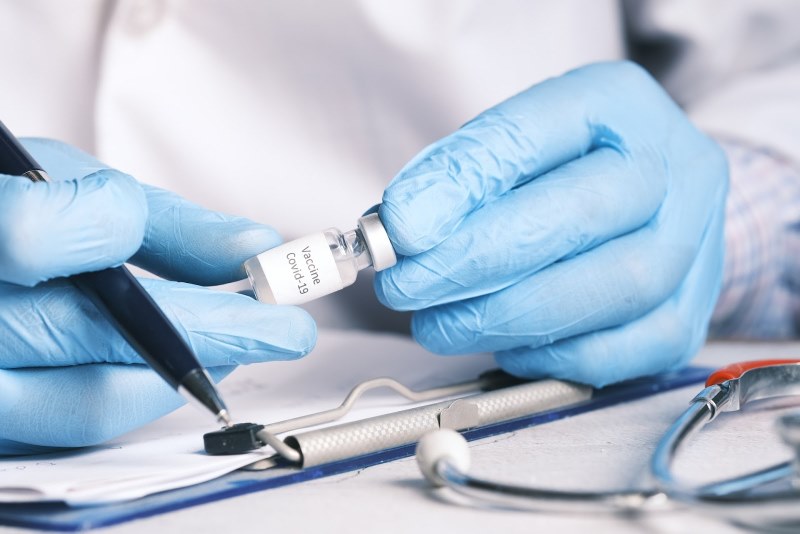
The term "biopharmaceutical" refers to pharmaceuticals and bioreagents that have been derived, produced, or created using a biological process or material. Immunoassays are beneficial tools in biopharmaceuticals' study and development, such as cell therapy, gene synthesis, and vaccines.
3. Food analysis
In producing food and developing new recipes, immunoassay testing is frequently used to identify potentially harmful pollutants or allergens. For instance, immunoassay testing can screen for gluten, dangerous compounds, poisoning with heavy metals, or pathogens such as E. coli.
4. Food allergen testing
This testing is vital since food-induced allergy responses can be lethal. Some people's immune systems react abnormally to proteins found in certain meals, causing a condition known as food allergy. Both cell-mediated and antibody-mediated responses involving immunoglobulin can cause symptoms. Milk, eggs, almonds, sesame seeds, wheat, and crustacea are common allergy foods that can be detected using one of the many immunoassay kits available at home and in the workplace.
Swabs taken from manufacturing equipment and tests on finished food items can be used to determine whether or not there was any cross-contamination and to ensure that businesses comply with legal regulations. People with food allergies can provide human IgE for immunological testing, while polyclonal or monoclonal animal antisera can provide animal IgG and IgY. While monoclonal antibodies are engineered to recognize only one protein or peptide, polyclonal antisera are generated against a panel of proteins.
Dot immunoblotting or SDS-PAGE can be used to identify food allergens qualitatively, whereas Rocket immunoelectrophoresis and ELISAs are utilized for quantitatively identifying hidden food allergens. Dot immunoblotting is also a method for detecting food allergens qualitatively. ELISAs are used to identify intact proteins, yet certain ELISAs cannot detect protein hydrolysate. Because lipophilic leftovers are so challenging to locate, the residual detection method known as immunoassays ELISA needs significant development.
5. Mycotoxin Analysis
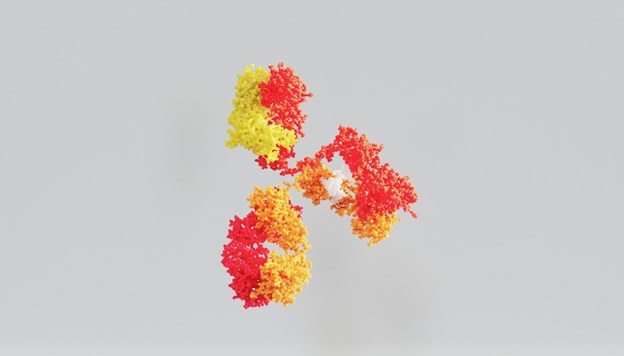
Mycotoxins are poisons that occur naturally and are created by specific molds. They are harmful to human health and pose a threat to consumers. Toxins such as aflatoxins, ochratoxin A, deoxynivalenol, zearalenone, and fumonisins are included on the list of these hazardous substances.
Agricultural items like corn, wheat, rice, oats, rye, soy, nuts, fruit, and spices can all be contaminated with mycotoxins if they are not properly stored. Also, mycotoxins can get into food and feed before harvesting and drying. Over a decade has passed since the introduction of mycotoxin detection based onimmunoassay techniques. Direct competitive ELISA testing is the most popular immunoassay procedure for detecting mycotoxins.
6. Environmental Monitoring
In more recent times, immunoassays have made their way into environmental science. Immunoassay helps detect environmental pollutants. For example, immunoassays examine ground and surface water for various harmful substances, such as PCBs (polychlorinated biphenyls), some pesticides, and others.
What advantages do immunoassay testing offer?
Due to its usefulness,antibody immunoassay has become commonplace. Methods that use antibodies, or immunoassays, are:
- Economical
- Reliable
- sensitive enough to detect trace amounts of molecules
- Adaptable to a diverse variety of chemical processes and industrial uses
Conclusion
Immunoassays can identify important antigens at deficient concentrations undetectable by conventional procedures. Immunoassays are typically rapid and precise, allowing clinicians to reliably diagnose various ailments, including diabetes, cancer, and cardiovascular disease. Curious about Immunoassays and their importance? If you need help understanding immunoassays, reach out to our staff, and one of our specialists will be more than delighted to help with all the necessary information you need.

